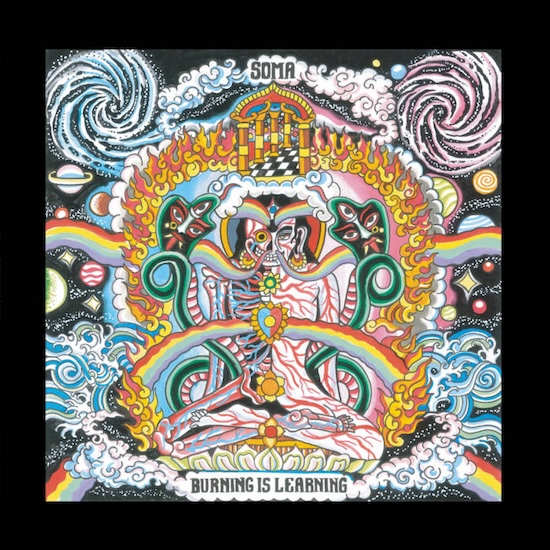Although the tunes played in Indian restaurants are usually enjoyable, I often hope for them to be taken up a notch or eleven. Broadcasting traditional music that has more oomph behind it would make it harder for larger parties of customers to concentrate on discussing Married At First Sight Australia or why no one at work likes the new bloke with the pointy shoes. Those tables would complain to the waiter about the intrusive racket.
Not this guy! Table for one, please!
The custom of dining alone can kill at least three birds with one dosa. Order a madras that’s hot enough and it can set off some deep natural cleansing to detox both the pores and the sinuses. And why not refuel the body with material sustenance while simultaneously healing the mind by meditating as one chews?
To accompany this restorative practice, SOMA (or Sacred Order Of Mystic Apogees) is the band I have been looking for. The New Jersey collective play music that’s rooted in the spiritual style of kirtan. With members whose backgrounds are in punk and metal, an array of equipment at the multi-instrumentalists’ disposal, production and mastering overseen by two different ex-members of Monster Magnet (Phil Caivano and John McBain, respectively), SOMA’s second album ups the ante without disrespecting its sources.
Some pieces stick more closely than others to their origins. Even these, thanks to the echoey and earthy production, threaten the heaviness that’s to be found on the gnarlier songs elsewhere. ‘Bhutapasarana’ sounds like Alice Coltrane partnering with Eternal Tapestry. ‘Amrta’ could be informed by ambient space rock. ‘Shivranjani’ is anchored by backing drones of which Bong would be proud. ‘Mahamrityunjaya Mantra’ resembles one of Al Cisneros’ OM songs, albeit before the gigantically distorted bass riffs kick in.
If this info makes SOMA sound like drone rock’s answer to Kula Shaker, or a troupe of George Harrisons for people in Saint Vitus hoodies, think again because SOMA’s agenda is to keep this ancient music alive while also putting their own personal spin on it, and without aping another people’s culture or trying to actively convert listeners to the spiritualism that’s enriched these players’ lives. Assigned elements, such as the chants, have been embellished with less commonly associated soundscapes, making for a very rich brew indeed.
As SOMA member Robert Ryan explains, “This music is not just for the yoga schools, it’s not just for the practitioners or monks.” – Nor is it just for the local eatery, I might add. – "It’s for everyone."


